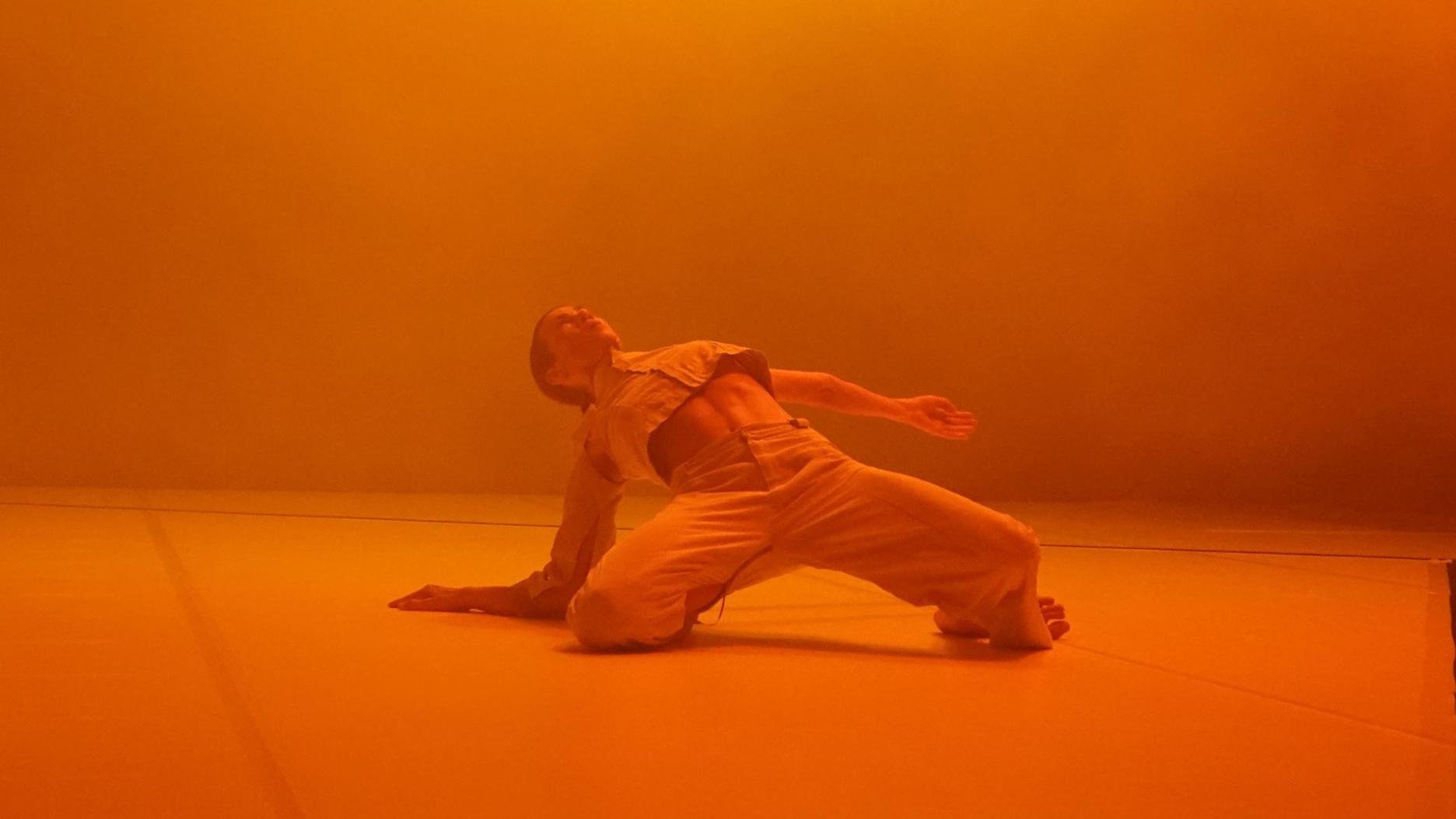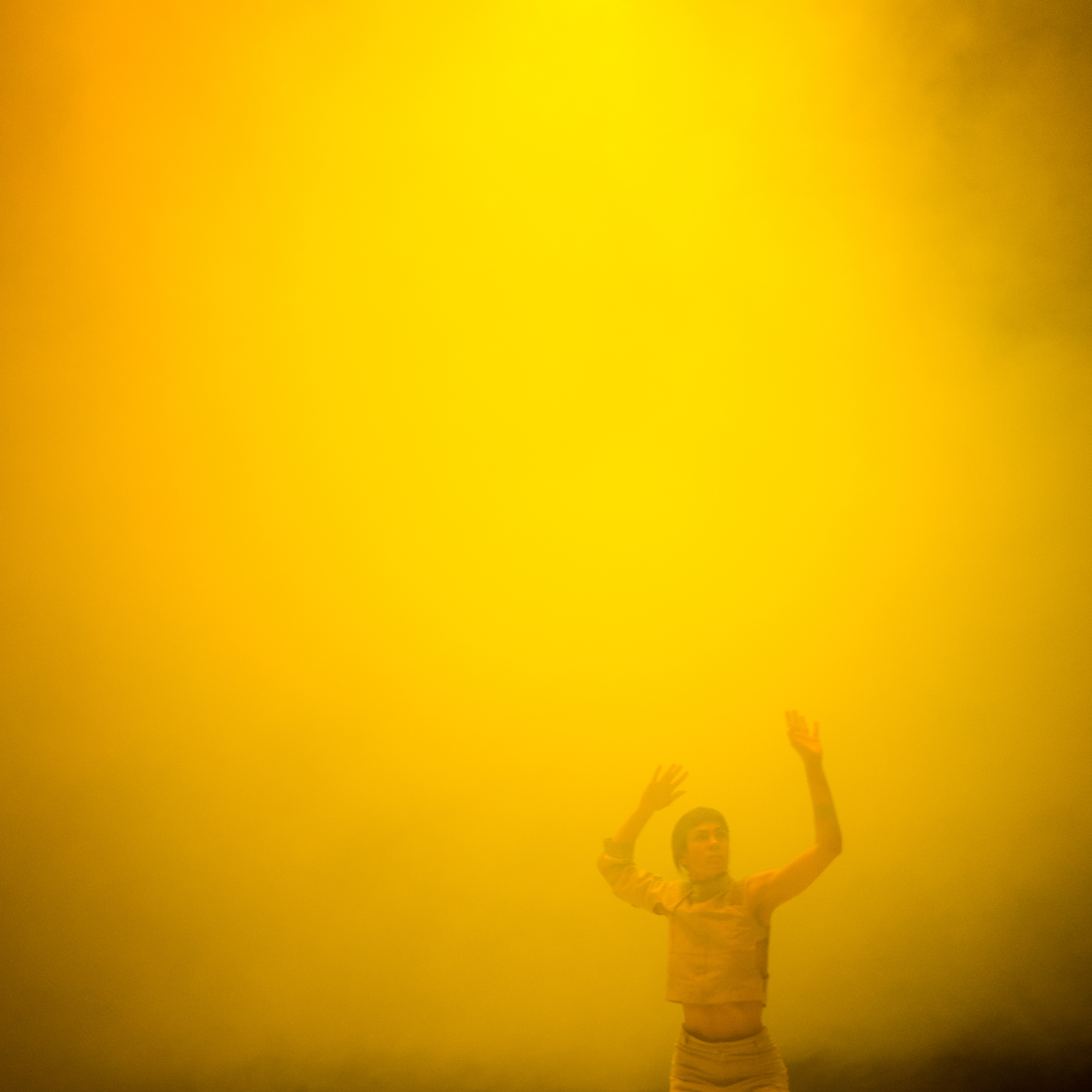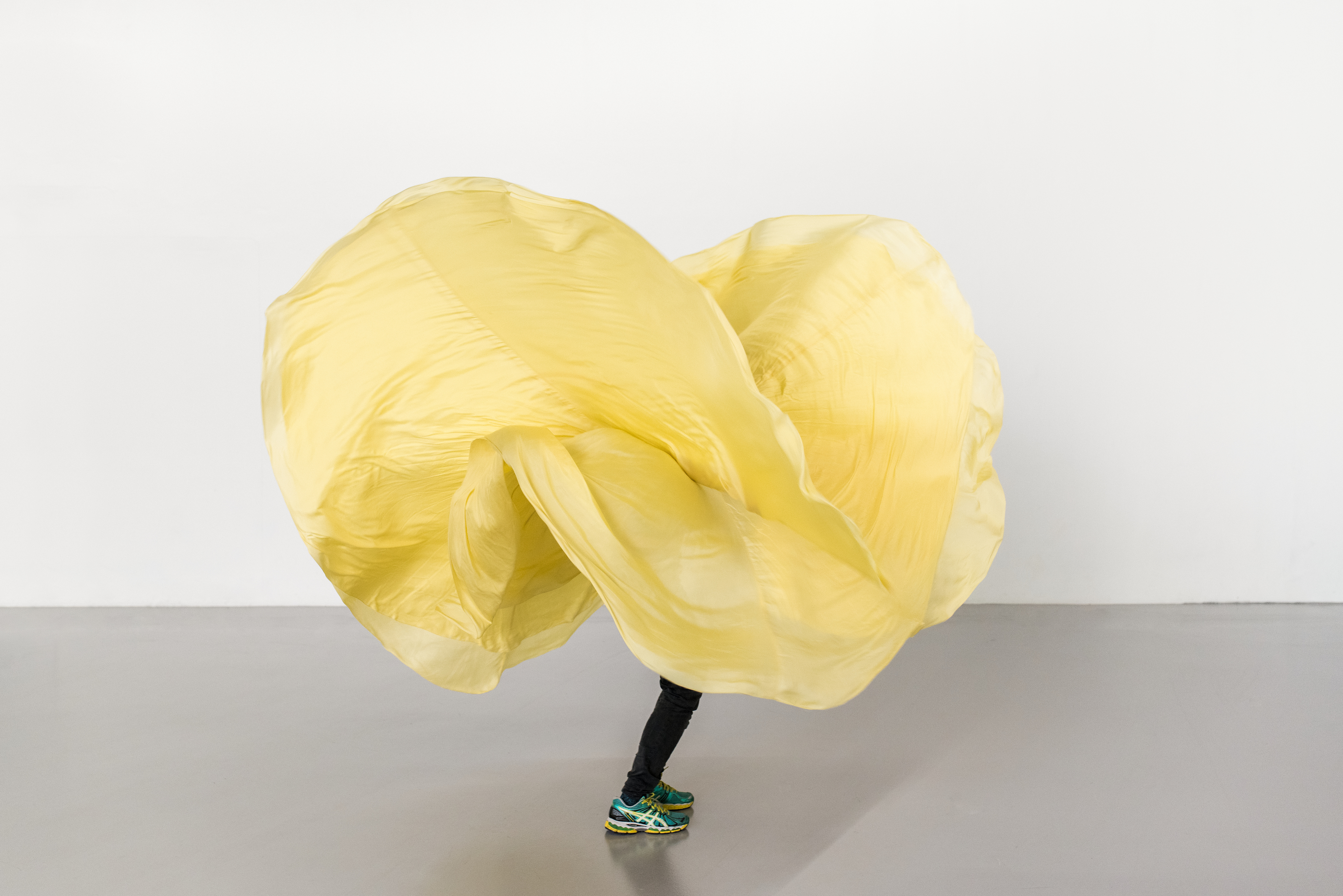Aina Alegre / Ola Maciejewska R-A-U-X-A / Loïe Fuller : Research

location
time
R-A-U-X-A 55 min / Loïe Fuller... 50 min
category
- Dance |
- musique live
-
Thursday 22 May.19h30
-
Friday 23 May.19h30
-
Saturday 24 May.17h00

This piece, conceived as a dance, sound and lighting trio, draws from archeological and sonic research on movement. The choreographer continues her obsession with pounding, resonating and vibrating bodies interacting with the pulses of the electro-acoustic and modular music performed live.
Alone on stage, Aina Alegre conjures up the physical and sonic memory of pounding, an old movement whose possibilities she explores extensively. The Spanish choreographer conceives R-A-U-X-A as a dialogue between dance, sound and lighting where the body vibrates into a pulse. This dialogue is revealed in her own corporeal memory, but her research also extends to other memories and practices. Pounding relates to some folk dances, tap dance, flamenco or house music as well as labor or ritual gestures. It evokes primal forms of music and communication, but it has a technical dimension as well. In this spirit, Alina Alegre builds up a deeply hybrid and nuanced dance where the body produces sound and rhythm as it interacts with the electronic score by Josep Tutusaus. R-A-U-X-A creates a series of soundscapes where movement is in a dialogue with the sound from the body and the machines.
With this piece, Alina Alegre continues work she started over fifteen years ago, which focuses on ideas around the body and issues of gesture memory and anthropology. Her choreographic language is closely linked with rhythm and music. As it turns out, her observation of pounding has been a consistent focus throughout very different pieces, including Le Jour de la Bête (2017), where performers wore metal-plated shoes to strike the dirt-covered floor and create polyrhythms.
Vincent Théval
Étonnante Aina Alegre, qui compose avec un environnement de haute définition une danse aussi brute et archaïque que délicate. Lire l'article de Nathalie Yokel, La Terrasse
Lire l'interview d'Aina Alegre par Claire Astier, Ma Culture
"Il faut avoir la sagesse et l'impulsion" Lire l'interwiew d'Aina Alegre par Adèle Beyrand dans Mouvement
Avec son exigence très singulière, Aina Alegre propose R-A-U-X-A un solo à l’épure très sophistiquée. Le jeu avec la lumière donne un relief singulier à ce travail autour du mouvement très martelé par moments, plus doux à d’autres. Au fil de la pièce, les lumières de Jan Fedinger lui offrent un écrin plein de contrastes : tantôt dans une lumière crue, tantôt dans une pénombre à l’orangé semblable à une tempête de sable. Dans ce paysage mouvant où la proposition sonore contribue aussi à donner une ambiance polymorphe, la danseuse aux belles lignes se livre à une impressionnante dissection de la mobilité. Pas de minute de répit dans ce qui s’apparente à une infatigable exploration du rythme. Claudine Colozzi, Danses avec la plume
Un solo surpuissant, entre pulsions ancestrales et robotique futuriste, martelant un rythme intemporel. Lire l'article de Thomas Hahn, dansercanalhistorique
Un solo sublimé par l’abstraction géométrique de l’espace ouvert et mystérieux qui embarque les spectateur.ice.s dans la traversée d’un paysage sensoriel et d’une architecture sonore. Ventilo

Loïe Fuller, an icon of American modern dance, is known for her “serpentine dance” in which she swirled her dress around. Since 2011, Polish choreographer Ola Maciejewska has researched and passed on the work of Fuller, which led to this solo performance.
A constantly evolving piece since it premiered in 2011, Loïe Fuller: Research is the first solo piece by Ola Maciejewska. The choreographer visits the motifs of the serpentine dance invented in the late 19th century by Loïe Fuller, an icon of modernism. Bordering on abstraction, the performance features changing shapes which unfold in two different exercises evocative of the relationship between sculpture and sculptor. The famous dress designed by Loïe Fuller resembles a “dance construction”, an assemblage of rods, fabric, and a body. The movement then grows out of the relationship between the human body and this object. Ola Maciejewska creates shapes to make that connection visible as she brings her own reinterpretation of Fuller’s art and passes on her legacy.
This performance fits into a long-running research of the choreographer on the connection between dance and visual arts, which includes other pieces on serpentine dances such as the trio Bombyx Mori (2015) and a new work scheduled in March 2026 at the DansFabrik festival (Brest). . In a joyful and reflexive movement, Ola Maciejewska brings a critical interpretation to the history of dance.
Vincent Théval
Please note: standing audience
